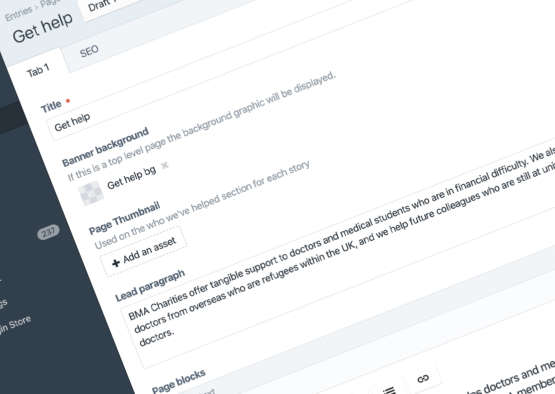



If you’re reading this, the chances are that you have been given the task of writing a brief for a new website or a redesign of your old website. This page will help guide you through the process. It’s not the definitive list of what you’ll need, but it’s certainly an excellent starting point, and will serve as food for thought. We have broken this guide up into a number of stages to make it more manageable.
You can download our website design brief word template for free at the bottom of the page.


Grab a drink and let us walk you through what you need to prepare when writing an effective website design brief or Request For a Proposal (RFP).
The website design company will need to know a bit about your company in order to get a feel for how they should design your website. A good starting point would be to list the following:
If you have an existing website, firstly let the web design company know the URL! (the web address) Then answer the following questions:
In order to meet your requirements, any design agency would need to know why the old website is no longer suitable. So also detail anything else that could be relevant.
You must now examine what you need from the new website. So, a good starting point would be to consider the following:
Outlining your budget is very important. Have no doubt, you will get better, more accurate quotes in response. If all of the agencies know what the budget is and are working to the same brief, you’re likely to get very similar quotes, which is good, right? At least you can compare apples with apples.
The website should be an extension of any offline media, advertising or branding that you have. It is always helpful to be provided with a brochure, some marketing literature or the annual report to help get a feel for the company, so include them with the brief.
In order to get an idea of the kind of site that you want, it is worthwhile noting three or four websites that you like – not necessarily competitors’ or sites related to your industry, just give a few example sites that you like the colour schemes of, the navigation, or the interactive elements.
Start thinking about how you want to populate your new site.
Resist the urge to duplicate your existing content in your new site – if your existing site is letting you down in some way, the chances are that the content is no longer up to scratch. Having thought about your target audience, take the opportunity to review whether your content still meets their needs.
Don’t put this off until the end of the project – start thinking now about how you’re going to produce the copy text. Do you have the resources or skills to create and supply the text to go on the website? If the answer to these questions is no, you will need a web copywriter as well – we can provide this service if necessary.
You should outline any special technical requirements that your company might have:
The ongoing maintenance of a website is an often overlooked aspect of the website’s design:
You are investing in a new website, so you want customers to see it, right? Now detail how you will promote it. An online business is no different to a traditional business it needs marketing.
The digital marketing of a website is often overlooked when considering the website brief. The promotion of your website, in terms of increasing visibility in search engines and generating a sense of engagement, is vitally important to the continued success of the site.
There are a number digital marketing activities that you should consider:
A website can also be supported by an offline marketing strategy, perhaps consider some of the following activities:
You might be thinking, ‘why do they need to know about offline promotion’? This is crucial if your communications are to be consistent across various channels. The decision making process is complex, people view product and services across a variety of devices and channels, at different times of the day. You need to ensure you capture their interest and engage with them at the right time, on the right channel.
You should finish your website design brief with a short conclusion, outlining what you would like to receive back from the design agency. As a rule of thumb, at Method & Class we provide a full proposal, detailing how the site would be built, the layout, the costs (initial and on-going), the timescales involved and any assumptions and conditions that we have made.
Don’t forget to include timescales and be realistic; a proper proposal can take a number of days to prepare, so don’t ask for it back in 2 days time.
The option to download a free template is below - we hope it helps 🙂
So you've got a good idea of what you need to write. You can also make your life easier by using the form below and we'll instantly send you a website design brief template to get cracking with your brief or RFP.
Good luck with your website design brief and don’t forget to include us on your list of companies to tender for the work… 🙂
If you need help, just give us a call on 01908 886180 – even if it’s just to have a chat about it all. Or better still, if you'd like to start with some advice and a chat, you could book me for a free sounding board sessions - these are a 30 minute chat, with no fees or obligations to use us. We can talk through your requirements and your ideas and I'll give you some pointers.
Download template brief - just enter your name and email address and we’ll email it to you straight away.
Please note: by entering your details above you consent to us contacting you through email.